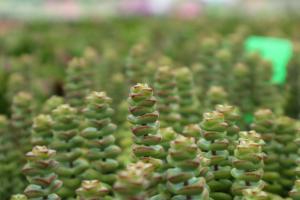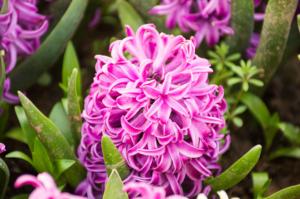Is a Rubber Tree Plant Safe Around Cats and Dogs?
If you're a pet owner and love indoor plants, it can be challenging to find ones that won't harm your furry companions. One of the popular houseplants, the rubber tree plant (Ficus elastica), has been known for its desirable traits, such as its attractive glossy foliage and easy-to-care-for nature. But is it safe to keep around pets?
Potential Risks of Rubber Tree Plants to Pets
The rubber tree plant contains a milky white sap or latex that can irritate pets' skin and cause allergies or stomach problems when ingested. The sap contains toxins that can affect both cats and dogs, and the severity of the reaction depends on the animal's size and the amount they have consumed.
Moreover, the rubber tree plant contains several compounds that are toxic to pets, including ficin, asparagine, and proteolytic enzyme. If you see your pet chewing or playing with the rubber tree leaves or stem, it's best to take them away and consult with a veterinarian if any symptoms occur.
Precautions to Keep Your Pets Safe
While the rubber tree is an attractive addition to any pet-friendly home, it's essential to keep safety in mind. Here are some precautions you can take:
Put the plant out of reach: Keep the rubber tree plant in a spot that your pets cannot reach, such as a high shelf or hanging basket. This way, your pets won't be able to chew, scratch, or dig at the plant.
Trim the plant regularly: If you have a rubber tree plant that's too big, you can trim it down to keep it at a manageable size. This way, you can also avoid having any falling leaves or debris that your pets might be interested in.
Watch your pets around the plant: Keep an eye on your pets and observe their behavior around the rubber tree plant. This way, you can quickly intervene if you see any signs of chewing or irritation.
Teach your pets: Train your pets to avoid the rubber tree plant if possible. You can use positive reinforcement or deterrent sprays to keep them away from the plant.
Other Pet-Friendly Houseplants to Consider
If you're looking for some other houseplants that won't harm your pets, here are some options:
Spider plant (Chlorophytum comosum)
Calathea (Calathea spp.)
Parlor palm (Chamaedorea elegans)
Boston fern (Nephrolepis exaltata)
African violet (Saintpaulia spp.)
Bamboo palm (Chamaedorea seifrizii)
Money tree plant (Pachira aquatica)
Areca palm (Dypsis lutescens)
Remember, it's always important to research the plants you're interested in if you have pets at home. Consider their toxicity level, how they affect your pets, and if there are any precautions you can take to keep your pets safe.
Conclusion
In conclusion, while the rubber tree plant is a beautiful indoor plant, it's essential to be mindful of your pets' health around it. The milky sap and toxic compounds in the plant can cause skin irritation, allergies, or stomach problems when ingested. By taking the necessary precautions, such as putting the plant out of reach, trimming it regularly, and observing your pets' behavior, you can enjoy the beauty of your rubber tree while keeping your furry companions safe.

 how many times do yo...
how many times do yo... how many planted tre...
how many planted tre... how many pine trees ...
how many pine trees ... how many pecan trees...
how many pecan trees... how many plants comp...
how many plants comp... how many plants can ...
how many plants can ... how many plants and ...
how many plants and ... how many pepper plan...
how many pepper plan...






























